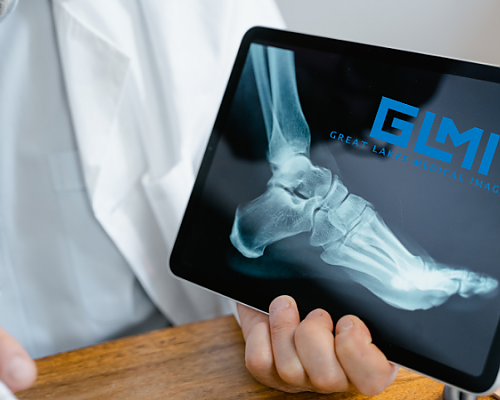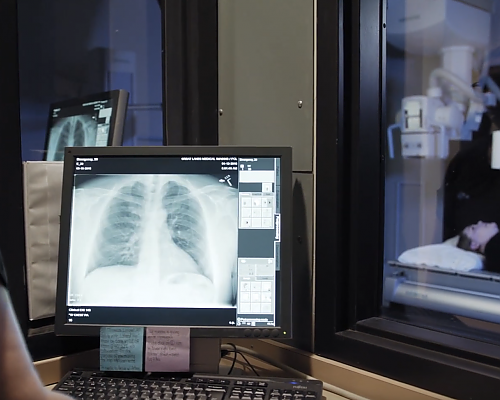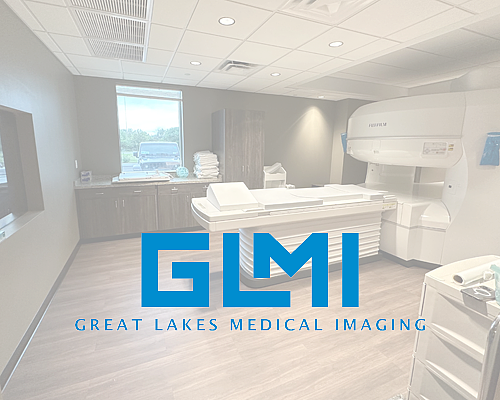Our Blog
GLMI Breast Care Center Offers Patients a Holistic Approach to Comprehensive Care

By Julie Nusbaum
Dr. Jason Pericak is passionate about women’s health. As Director of the GLMI Breast Care Center for the past six years, he has helmed the Center’s multidisciplinary approach to women’s health and breast cancer detection and treatment. As a board certified Diagnostic Radiologist with fellowship training in Breast Imaging, Dr. Pericak has seen the prevalence of breast cancer and the positive effects of early and annual screening studies. Dr. Pericak took the lead developing an innovative practice program for assessing lifetime breast cancer risk and offering those patients with hereditary cancer red flags genetic testing.
From the moment you make an appointment at the GLMI Breast Care Center on Park Club Lane in Williamsville, it is immediately apparent how different the breast imaging experience will be. New and returning patients download and fill out a risk assessment form, a key element of GLMI’s new Breast Care Risk Assessment and Genetic Testing program, a revolutionary program and the only of its kind in Western New York. Once patients fill out the form, which asks simple questionslike age, hormone usage, and BMI to specific ones about personal and family history of rare or multiple cancers, the doctors use the Tyrer-Cuzick computer model to determine a woman’s percentage lifetime risk for developing breast cancer. “Based on the Tyrer-Cuzick score, we determine the appropriate screening for each individual. Our patients will know whether they are having the correct screening studies such as mammography and breast sonography and/or breast MRI,” says Dr. Pericak. “Further, we will be able to guide our patients for how to proceed in the upcoming years.”
According to GLMI Breast Care Center’s newest addition, Dr. Marie Quinn, “the genetic screening uses a woman’s health and family history to identify patients that may fall through the cracks.” Dr. Quinn, a Board certified Diagnostic Radiologist and Breast Imaging Specialist, says, “My goal is to improve access to this type of testing for all women and identify patients with the risk of developing breast cancer.” The risk assessment questionnaire explores hereditary cancer red flags, including Ashkenazi Jewish ancestry with HBOC (Hereditary Breast and Ovarian Cancer) associated cancers, as well as personal and family history of rare, young or multiple cancers, and the resulting Tyrer-Cuzick score is used best determine the appropriate breast imaging studies for each individual patient. For example, every patient with an elevated Tyrer-Cuzick score will have a screening ultrasound in addition to the standard digital mammography. Depending on their Tyrer-Cuzick score, some patients will also receive a breastMRI. “Because we are a full-service radiology practice, we have the capability to add on additional tests if needed,” offersDr. Quinn. In some cases, doctors make a recommendation on whether that patient would benefit from genetic testing. GLMI offers the genetic testing, a simple saliva test which examines 28 different genes, right on site. “We add the genetic testing because it is the right thing to do. Abnormal results can be linked to increased risk for up to eight kinds of cancer,” adds Dr. Pericak. “Nothing like this is currently happening in our community.”
Most importantly, every patient that comes into the Breast Care Center for any diagnostic breast imaging will consult with and receive results from either Dr. Pericak or Dr. Quinn explains Dr. Pericak, “ Following the studies, we interpret the results of all exams and get the best feel for what is going on with the patient. Then we consult with each patient about the risk assessment, the Tyrer-Cuzick score, and the breast imaging results to be sure that each patient understands what it all means and how it should be used.” Dr. Quinn notes, “Most patients don’t realize that we only have dedicated breast imagers reading mammograms and consulting with patients. This lowers the call back rate and empowers our patients to know risk factors and results.” In addition to delivering immediate results on-site, GLMI provides referring physicians an immediate, same-day, comprehensive dictation with results, recommendations for next steps, and referrals if warranted.
Dr. Quinn emphasizes that the Center’s “main goal is to improve access for patients to this type of testing and to be an advocate for women and be present for them,” as they navigate the breast cancer screening and diagnostic imaging process. “We are trying to do our best for women to get the appropriate screening. We offer a full range of services, including baseline screening mammograms, breast ultrasound, breast MRI, MRIguided biopsies, and stereotactic biopsies,” continues Dr. Quinn. “Breast cancer is a very treatable disease when caught early.”
Citing several examples of the ripple effect of the genetic testing among family members, Dr. Pericak recounts how the risk assessment questionnaire has led to subsequent genetic testing and discovery of a BRCA gene. He recalls a particular patient with HBOC but no prior history. She found that she had the BRCA gene and referred other members of her family for genetic testing as well. “Because sometimes cancer risk runs in families, we take care of multiple family members here, and they ultimately have procedures that can save their lives,” explains Dr. Perica
The three-pronged approach of risk assessment, genetic testing and state-of-the-art imaging provides a comprehensive, patient-centered, personalized approach to women’s health care. “Here at GLMI’s Breast Care Center, we make testing, which sometimes can be anxiety-provoking, as pleasant, expedient and relaxing as possible,” says Dr. Quinn.
Society of Breast Imaging and American College of Radiology Recommendations for Mammography Screening for Breast Cancer
Women at average risk for breast cancer
Annual screening from age 40
Women at increased risk for breast cancer
Women with certain BRCA1 or BRCA2 mutations or who are untested but have first-degree relatives (mothers, sisters, or daughters) who are proved to have BRCA mutations
Yearly starting by age 30 (but not before age 25)
- Breast MRI typically added
Women with 20% lifetime risk for breast cancer on the basis of family history (both maternal and paternal)
Yearly starting by age 30 (but not before age 25), or 10 years earlier than the age of diagnosis of the youngest affected relative, whichever is later
- Breast MRI typically added
Women with mothers or sisters with pre-menopausal breast cancer
Yearly starting by age 30 (but not before age 25), or 10 years earlier than the age of diagnosis of the youngest affected relative, whichever is later
Women with histories of mantle radiation (usually for Hodgkin’s disease) received between the ages of 10 and 30
Yearly starting 8 years after the radiation therapy, but not before age 25
Women with biopsy-proven lobular neoplasia (lobular carcinoma in situ and atypical lobular hyperplasia), atypical ductal hyperplasia (ADH), ductal carcinoma in situ (DCIS), invasive breast cancer or ovarian cancer
Yearly from time of diagnosis, regardless of age
- Breast MRI typically added
(excerpted from Journal of the College of American Radiology, Breast Cancer Screening With Imaging: Recommendations from the Society of Breast Imaging and the ACR on the Use of Mammography, Breast MRI, Breast Ultrasound, and Other Technologies for the Detection of Clinically Occult Breast Cancer, January 2010)
‹ Back









